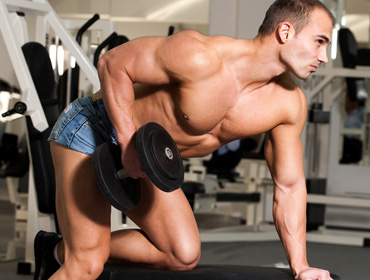our gallery
-

What is the purpose of your back muscles?.
Your back muscles are the main structural support for your trunk (torso). These muscles help you move your body, including your head, neck, shoulders, arms and legs. Your back muscles work together to allow you to bend over, twist, turn your head and extend your back.
These muscles also help you sit and stand up straight. They play an essential role in supporting your spine and helping you breathe.
Intermediate: The intermediate muscles assist with breathing. They attach to the ribs and help your chest expand and contract when you inhale and exhale.
Intrinsic: These muscles stabilize your spine and help you bend, rotate, flex and extend your back. They also help you control your trunk, neck and head.
-

What Is Aerobic Exercise?
Picture yourself working out. Are you lifting heavy weights? Stretching your muscles? Or maybe you're performing an activity that causes you to sweat and breathe hard that makes your blood pump through your veins as it carries oxygen to your muscles to keep you going. If you're performing this last activity, then you're engaging in aerobic exercise.
Aerobic exercise is any physical activity that makes you sweat, causes you to breathe harder, and gets your heart beating faster than at rest. It strengthens your heart and lungs and trains your cardiovascular system to manage and deliver oxygen more quickly and efficiently throughout your body. Aerobic exercise uses your large muscle groups, is rhythmic in nature, and can be maintained continuously for at least 10 minutes.
Before going into the benefits of aerobic exercise, let's break down some key terms we just mentioned. Cardiovascular system is made up of your heart and blood vessels e.g., arteries, veins, and capillaries that transports blood throughout the body. Aerobic refers to how your body uses oxygen to sufficiently meet energy demands during exercise.
-

Biceps.
The biceps is a muscle on the front part of the upper arm that is attached to bones in the shoulder and the elbow across the front by connective tissue (tendons). The biceps muscle helps you bend the elbow and rotate your forearm (supination of the forearm) during activities like turning a door handle or tightening a screw with a screwdriver.
-

The Benefits Of Barbell Exercises.
“When you’re strength training, the best tool you can use is the barbell,” says personal trainer Tom Wright. “Nothing else comes close. Lifting for strength requires multi-joint exercises known as compound lifts, which create tension through different muscles and movement patterns, and they stimulate thousands of nerves all of which are a part of getting stronger.
“No other equipment allows such dramatic improvements in overall strength. Start out using a weight you’re comfortable with, increase the load every week and watch your numbers fly up.”
-

What are the benefits of doing pushups every day?
Traditional pushups are beneficial for building upper body strength. They work the triceps, pectoral muscles, and shoulders. When done with proper form, they can also strengthen the lower back and core by engaging (pulling in) the abdominal muscles.
Pushups are a fast and effective exercise for building strength. They can be done from virtually anywhere and don’t require any equipment.
Doing pushups every day can be effective if you’re looking for a consistent exercise routine to follow. You will likely notice gains in upper body strength if you do pushups regularly.
For the best results, continue to add variety to the types of pushups you do. You can also follow a “pushup challenge“ where you gradually increase the number of pushups each week. You can work up to doing 100 reps in two months.
